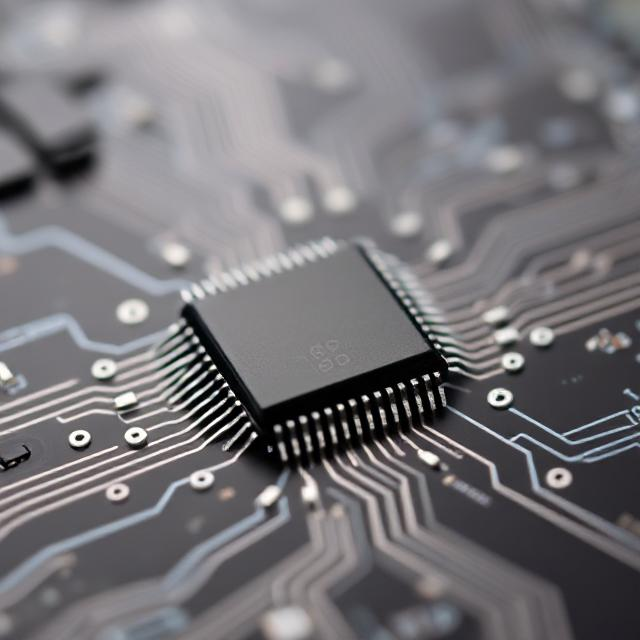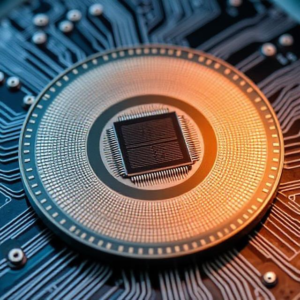Introduction to Integrated Circuits (ICs)
What are Integrated Circuits (ICs)?
An Integrated Circuit (IC) is a small chip made up of multiple electronic components like transistors, resistors, capacitors, and diodes, all packed into a tiny package. These components work together to perform various tasks in an electronic device. ICs are the building blocks of modern electronic systems such as computers, smartphones, TVs, and even household appliances.

Before ICs, electronic circuits were built using individual components, which were bulky, expensive, and consumed more power. ICs have revolutionized electronics by making devices smaller, cheaper, and more efficient.
Components of an Integrated Circuit
An IC typically contains:
-
Transistors: Switches that control the flow of electricity.
-
Resistors: Control the amount of electrical current.
-
Capacitors: Store electrical energy temporarily.
-
Diodes: Allow current to flow in only one direction.
-
Inductors: Store energy in a magnetic field (though less common in ICs).
All of these components are built onto a silicon wafer using a process called photolithography, where patterns of circuits are etched onto the wafer.
How ICs are Made
The process of making ICs involves several steps:
-
Wafer Preparation: A thin slice of silicon is prepared to act as the base material for the IC.
-
Photolithography: Patterns of circuits are transferred onto the silicon wafer.
-
Etching and Deposition: Layers of materials like metals and insulators are added, and unwanted areas are etched away.
-
Testing and Packaging: After manufacturing, ICs are tested for functionality and then packaged into small, durable chips ready for use in electronic devices.
This process allows millions (or even billions) of components to fit into a tiny chip, making modern electronics extremely compact.
Types of Integrated Circuits
There are different types of ICs, depending on their function and complexity:
-
Analog ICs: These handle continuous signals, such as sound or temperature. They are used in audio amplifiers, sensors, and radio receivers.
-
Example: Operational amplifiers (Op-Amps) are commonly used in audio systems and signal processing.
-
-
Digital ICs: These handle binary data (0s and 1s). They are used in microprocessors, memory chips, and logic circuits.
-
Example: Microcontrollers, which control devices like washing machines, robots, or cars.
-
-
Mixed-Signal ICs: These combine both analog and digital functions. They are used in applications where signals need to be both processed and controlled.
-
Example: A device that takes an analog sensor input and sends a digital output to a microcontroller.
-
Importance of ICs in Modern Electronics
ICs are essential in almost every modern electronic device, including:
-
Smartphones and Computers: Microprocessors and memory chips are examples of ICs that power computing devices.
-
Home Appliances: ICs control the operation of microwaves, washing machines, and refrigerators.
-
Automobiles: ICs control everything from engine management to infotainment systems in cars.
-
Medical Devices: ICs are used in pacemakers, hearing aids, and diagnostic equipment.
Without ICs, electronics would be much larger, slower, and less efficient. ICs have enabled the miniaturization and functionality of modern technology.
Advantages of Integrated Circuits
ICs have numerous benefits that have made them the backbone of modern electronics:
-
Miniaturization: ICs allow for smaller devices with more power.
-
Lower Cost: Producing ICs in large volumes lowers the cost of each individual chip.
-
Efficiency: ICs consume less power and perform faster than traditional circuits.
-
Reliability: Since ICs are made from high-quality materials and are tested rigorously, they are more reliable than separate components.
-
Faster Performance: ICs allow for faster processing speeds in computers, smartphones, and other digital devices.
Applications of ICs
ICs are found in many applications:
-
Computing Devices: CPUs, GPUs, and memory chips that run our computers and phones.
-
Communication Systems: ICs are used in network devices like routers, cell phones, and Wi-Fi modules.
-
Consumer Electronics: TVs, music players, and gaming consoles all depend on ICs to function.
-
Automobiles: Car engines, sensors, and infotainment systems all use ICs to run smoothly.
Future Trends and Challenges in ICs
The future of ICs is exciting and involves continuous advancements. Some of the trends include:
-
Smaller and More Powerful ICs: With advancements in semiconductor manufacturing, ICs are becoming smaller and more powerful. Moore’s Law, which predicts that the number of transistors on a chip doubles every two years, is still largely applicable, though it is slowing down in recent years.
-
3D Integrated Circuits: To overcome limitations in size and power, researchers are looking into stacking ICs vertically, creating 3D chips.
-
Quantum and Neuromorphic ICs: These new types of ICs are being designed to handle quantum computing and brain-like computations, offering future solutions for artificial intelligence (AI).
However, challenges like heat dissipation, manufacturing complexity, and cost remain hurdles that engineers are working to overcome.
Conclusion
Integrated Circuits (ICs) are at the heart of nearly all modern electronics, driving the performance and miniaturization of devices across every industry. Whether it’s in consumer gadgets, medical devices, or automobiles, ICs enable the functionality we rely on every day. With ongoing innovation, IC technology will continue to evolve, leading to faster, more efficient, and more capable electronic systems.











